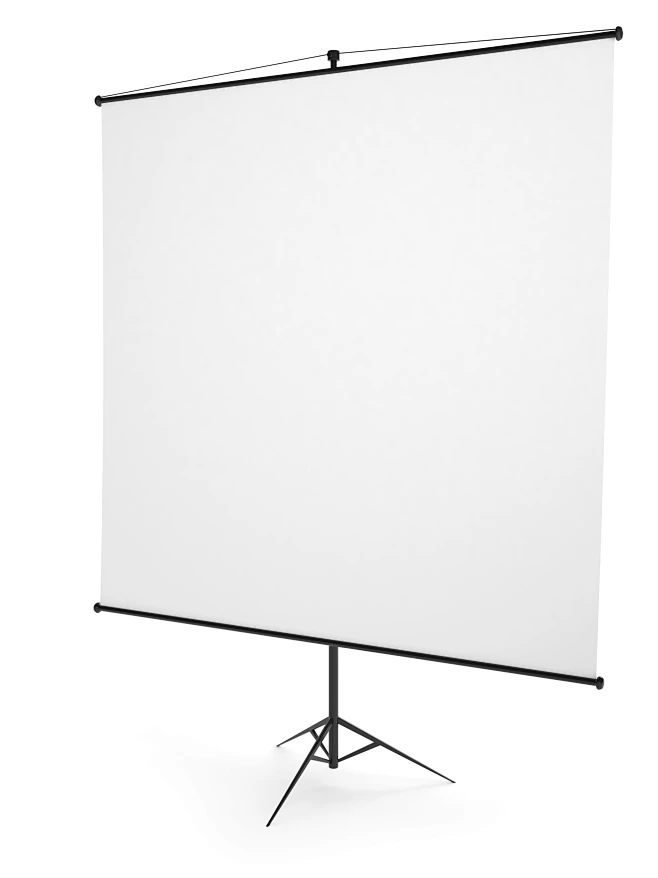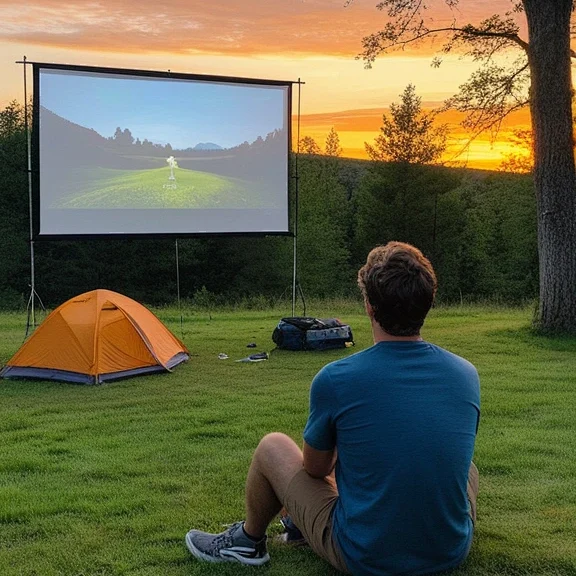


Many people hesitate when buying a projection screen: electric or fixed? Actually, if you have a dedicated viewing area at home or a fixed presentation wall in the office, a Fixed Frame Projection Screen is the “cost-effective king” for long-term use! It stretches the screen flat and wrinkle-free with a frame, offering much clearer images than loose electric screens. In 2025, it even comes with ultra-thin borders and new light-resistant materials. Today, we’ll use plain language to teach you how to choose the right one—beginners can easily follow along!
First, understand: Why are more and more people choosing Fixed Frame Projection Screens in 2025? Let’s directly compare it with common electric screens and portable screens to see their pros, cons, and suitable scenarios at a glance:
| Screen Type | Core Advantages | Suitable Scenarios | 2025 Popular Materials | Installation Requirements | Suitable Users |
| Fixed Frame Projection Screen | Flat wrinkle-free image, accurate color reproduction, long lifespan | Home theaters, fixed meeting rooms, exhibition halls | Light-resistant fiberglass, 4K-specific white plastic | Requires fixed wall/ceiling, one-time installation | Long-term users, image quality pursuers |
| Electric Screen | Convenient retraction, space-saving | Small apartments for temporary viewing, multi-purpose rooms | Needs reserved power supply and storage space | Users with small spaces, occasional use | |
| Portable Screen | Movable, easy to carry | Outdoor projection, temporary presentations | Lightweight white plastic | No installation, supported by stands | Frequent business travelers/campers |
From the comparison, you can see the core advantages of Fixed Frame Projection Screens are “stability” and “image quality”—the frame stretches the screen flat like a canvas, avoiding wrinkles that electric screens get after long-term use. Especially when paired with 2025’s new 4K/8K projectors, it restores details perfectly. But choosing it requires attention to three key points: material, size, and customization. Let’s break them down one by one.
First, materials. In 2025, there are three mainstream materials for Fixed Frame Projection Screens—don’t choose blindly! For example, some people used ordinary white plastic screens to watch HDR movies, resulting in blurry dark details, but switching to light-resistant fiberglass screens made the images clear instantly:
| Material Type | 2025 Upgrade Features | Brightness Adaptation (Lumens) | Color Performance | Recommended Scenarios |
| Light-Resistant Fiberglass | New nano light-resistant coating, no need to fully close curtains during the day | 1500-3000 lumens | Saturated colors, no glare | Home living rooms, open meeting rooms |
| 4K-Specific White Plastic | Improved screen density, compatible with 8K projectors | 2000-2500 lumens | Accurate detail restoration, no graininess | Home theaters, professional presentation halls |
| High-Contrast Gray Plastic | Upgraded dark area gain, purer black levels | Over 2500 lumens | High contrast, suitable for action movies | Enthusiasts’ home theaters, gaming rooms |


Next, size. Once a Fixed Frame Projection Screen is installed, it’s hard to replace, so you must calculate the size correctly! The most practical calculation method in 2025 has only 3 steps—even people who are bad at math can do it:
- Measure the “viewing distance”: The straight-line distance from your seat to the wall (e.g., 3.5 meters from the sofa to the wall in the living room);
- Calculate the screen diagonal: Viewing distance × 0.8 (3.5m × 0.8 = 2.8m, corresponding to 110 inches);
- Check wall space: Ensure the wall width and height can fit the frame (e.g., a 110-inch screen is about 2.4m wide and 1.35m high, so leave enough margin on the wall).
If your wall is irregular (e.g., curved, with socket obstructions) or you want a frame color that matches your decor, choose Fixed Frame Projection Screen customization directly! In 2025, customization services are super flexible—frames can be black, white, or wood-colored, screens can be cut into trapezoids or circles, and you can even add logos. A client once customized a screen with a brand-colored frame for their company’s meeting room, which looked very professional during meetings.
FAQs for Beginners (2025 Tested Answers)
Q1: Is installing a Fixed Frame Projection Screen troublesome? Do I need to drill holes?
A1: Most 2025 new models come with “drill-free brackets”. If the wall is tiled or painted, you can fix it with strong adhesive—even girls can install it themselves. For gypsum walls, it’s better to drill holes for stability, and generally, custom suppliers include on-site installation.
Q2: Is a fixed frame screen suitable for small apartments?
A2: Yes! Choose the “ultra-thin border model”—the narrowest border in 2025 is only 1cm. Installed in a small living room, it looks like a hanging painting, taking up no visual space. Unlike electric screens, you don’t need to retract it when not in use, which is more convenient.
Q3: If I buy a Fixed Frame Projection Screen, can I move it to another location later?
A3: The frame is detachable. As long as the new wall has enough space, you can disassemble and reinstall it. However, it’s recommended to choose a high-quality frame—2025’s alloy frames are lighter than old wooden ones and less likely to deform during disassembly and assembly.
Finally, a reminder: Don’t just look at the price when choosing a Fixed Frame Projection Screen. In 2025, low-quality cheap screens are prone to degumming and fading. It’s better to choose a customizable brand model that can adapt to your projector and space, and last 5-8 years without problems~


